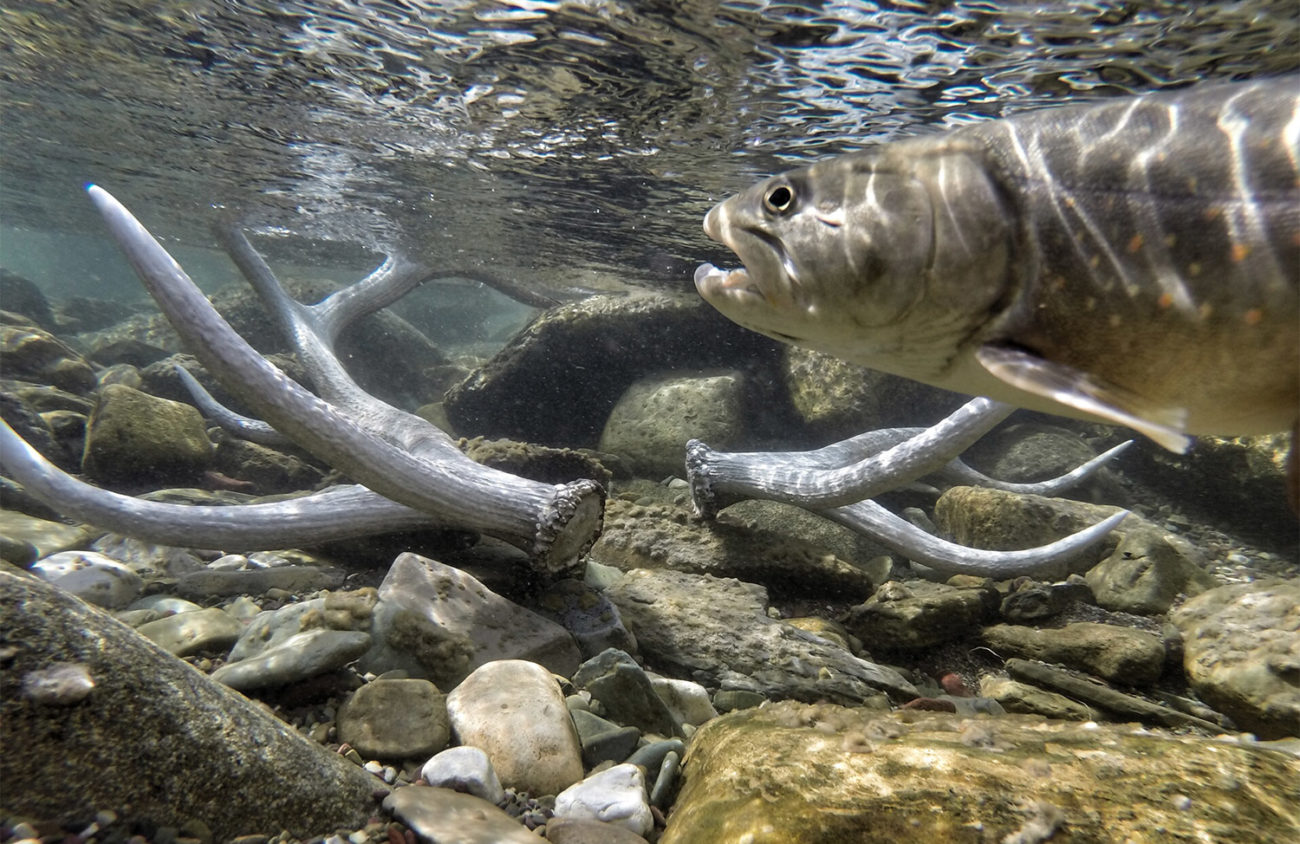Clouds of dust leaped from the dirt road as I tromped steadily up a Forest Service road in the Deschutes National Forest. The fine dust preserved my boot tracks next to a line of black bear tracks that I carefully stepped around. I had my duffel bag — which held wading boots, waders, a peanut butter and jelly sandwich, a few scoops of trail mix, a liter of water, a small net — slung over my body like a backpack, and the straps dug into my shoulders. I carried my fly rod in my hand.
The Metolius River charged through the canyon 200 feet below. I looked down the slope on the side of the road, and the grade seemed just gentle enough that I could scramble down it and get to the river. There were only so many hours to fish that day, and in my haste, I stepped on a patch of loose rocks that immediately tumbled down the hill and sent me backwards. I landed on my duffel bag. I crushed my sandwich for sure. I hoped I didn’t break the net.
On a normal fishing expedition I might not put my body and gear on the line like that. But that day was different because I was fishing for bull trout — one of the rarest and most protected fish species in Oregon. They’re big — usually over 20 inches — with a broad face and mouth that looks almost mean, hence the name bull trout. Their light brown or green bodies are flanked by orange spots, and their fins are finished with distinguishing white tips.
I had heard a few things about Oregon’s bull trout from fly anglers around this state’s other rivers. After a day of fishing for stocked trout on the McKenzie, a tall man with a mustache wearing a flannel and shiny waders told me that he had once caught a bull trout and a steelhead on subsequent casts. If you want to talk about bull, I’m pretty sure he was full of it. But I really became interested when a steelhead fisherman on the Deschutes River in Central Oregon said he used to fish for bull trout on the Metolius in his college days at the University of Oregon.
Either he had a gem of a spot or he was a criminal — intentionally fishing for bull trout is illegal in many places and on all but one river in my home state of Montana, and bull trout harvest is illegal everywhere. That’s because bull trout are a federally endangered species and are especially vulnerable to the dams that block the fish from completing necessary spawning migrations, as well as habitat loss, invasive species and climate change.
Rivers where an angler can legally fish for bull trout are few, and the Metolius, as one of these rivers, intrigued me. And one section of the river was “fly fishing only” — exclusive and a bit pretentious, but desirable.
The Metolius is fed by groundwater, which makes it crystal clear, but when I finally did get to the river, I couldn’t see that clarity due to the way the water foamed and spit as it rushed through the canyon. The deep pools and logjams where bull trout usually live were nowhere to be found. I looked up at the slope I had just slid down, cursed, and started the climb back up.
The Forest Service road eventually turned into a trail, and that trail faded away gradually as I walked. I hacked at the overgrown brush just to get to the river, and the good fishing spots were few and far between. Walk for 20 minutes, fish for five, walk for 20. I hadn’t even come close to catching a fish.
Finally, I found an open area to reach the river. As I got in position to cast my subsurface fly into a deep drop-off that followed a gentle riffle, I had a good feeling that this spot, after six miles of walking, was my best chance yet to catch a bull trout. And sure enough, on my second cast, I saw a giant shadow swim up and lunge at my fly, roll on its side and flash a pale underbelly toward me. It all happened in an instant.
And then it was over, because the fish missed my fly completely. My worn-down shoulders slumped in defeat. I knew I had just missed my best chance at a bull trout, and I knew that more than likely the opportunity wouldn’t come up again. I was right — the only animal I saw for the rest of the day was the pissed-off skunk that charged down the trail at me and nearly ruined my day further.
But on the walk back, contentment replaced my haste and frustration. Above the tips of ponderosa pine across the canyon, the sun turned a protruding slab of rock bright orange. I looked back down into the canyon at the rushing whitewater, thankful I wasn’t scrambling down the slope, and thankful that bull trout lived in a place that was so hard to get to.
Camping is accessible at eight Forest Service campgrounds on the Metolius River. Visit the Camp Sherman Store and Fly Shop for fishing and camping supplies.
